-
January 23, 2019 by Total Fire and Safety

Commercial first aid kits don’t have to be costly. Yet, when you start to compare commercial first aid providers, you will see some radical differences in pricing. Many first aid service companies find creative ways to drive up costs for their customers. At Total Fire & Safety, our customers never have to worry about “hidden costs” because there are none! Knowing what your company needs and being sure you are not paying for more can help your overall first aid budget and ensure you have the right first aid provider on your side. Here are some tips on hidden fees so you can avoid any surprise charges from your first aid service company.
- Make sure you know what is going in the box.
It is possible that you don’t need many of the supplies the service stocks in your cabinet. Depending on your workplace, employees can experience minor cuts etc. However, overstuffing a kit with odd size bandages and unnecessary items like hand lotion, lip ointment, dental cream, etc. helps a company justify a higher invoice. At Total Fire and Safety we stock what is required by OSHA and what is directed by the client. No redundant or unnecessary items.
- Make sure you are not getting charged extra for “normal” items.
Some companies charge extra for special items, like disinfectant wipes. Check your invoices! There are no surprises with TFS.
- Make sure you are not getting charged for additional representatives.
Some first aid companies have separate reps for stations, for example, first aid kits and eyewash stations. At TFS, your single representative is knowledgeable about all your first aid needs to streamline costs and deliver consistent quality service.
- Make sure the first aid service meets ANSI requirements.
ANSI (American National Standards Institute) puts together the requirements for first aid supplies in the workplace. They provide a specific list for first aid kits. A service company might overlook this list in order to stock a kit with many unnecessary various types of items. At Total Fire and Safety, we provide supplies required by ANSI as well as OSHA.
- Make sure you understand the fees on the invoice.
Do you see service or delivery charges, overstocking or restocking fees? First aid service companies pile these costs into an unreadable invoice. TFS does not charge service fees, fuel, or delivery charges. We only charge for items that employees have used. Have a question about the bill? TFS is there to answer any concerns.
There are many services companies in business to make a buck at the expense and well-being of your company. You should not have to choose between a safe work environment and a cheaper bill. TFS recognizes the importance of a healthy workplace combined with the affordability of superior service. TFS never overcharges, overstuffs, or places hidden fees with in a first aid kit. We provide the right supplies to keep employees safe at work while always keeping costs down. For more than 30 years, Total Fire and Safety has been providing OSHA approved first aid kits and replenishment to businesses. If we can help with your first aid needs, contact us today at 630-960-5060.
Category: Business Safety, First Aid, First Aid Kits, Total Fire and Safety Tags: fire and safety needs, fire safety, first aid, first aid supplies, Total Fire & Safety | Comments Off on Avoiding the Hidden Costs of Commercial First Aid Kits
-
October 2, 2018 by Total Fire and Safety
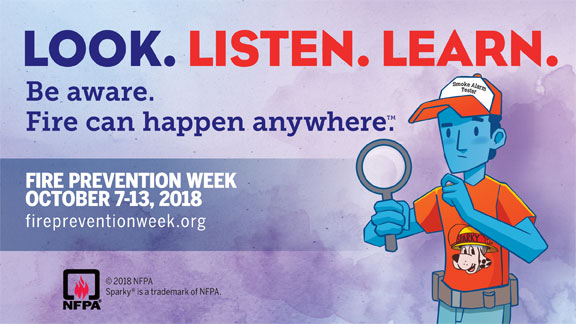
Fire prevention week was instituted in commemoration of the Great Chicago Fire of 1871 which burned from October 8-10, 1871 and took the lives of nearly 300 people. It burned nearly 3.3 square miles of Chicago and left over 100,000 residents homeless.
Forty years after the tragic blaze, the U.S. Fire Marshall used the anniversary to promote fire prevention and fire safety. In 1925, President Calvin Coolidge proclaimed fire prevention week as a national observance and it has become the longest running health observance in the country.
Even though we know more now about fire prevention than ever before and we have better equipment too, the National Fire Prevention Association (NFPA) released a shocking statistic: if you reported a fire in your home, you are more likely to die today than you were a few decades ago. Today’s home fires burn faster, allowing occupants less than two minutes to escape without harm.
Although the messages of Fire Prevention Week primarily focus on home fires, their messages can be applied at any location including businesses, warehouses, and other commercial spaces. Fire prevention week is a time to draw attention to the fire safety practices within your company using the resources provided by fire departments, the NFPA, and companies like Total Fire and Safety.
The following are some initiatives companies can take to observe Fire Prevention Week:
This year, fire prevention week runs October 7-13. The theme is Look. Listen. Learn. Be aware- Fire can happen anywhere. This year’s campaign focuses on basic but essential ways to escape your home fire safely with three simple steps:
- Look for places a fire could begin. Identify potential fire hazards in your workplace and remove them.
- Listen for the sound of the alarm. As soon as the alarm sounds, make your way out of the building at a safe distance from the fire.
- Learn two ways out of every room. Make sure all exits leading outside are free of clutter, unlocked and have emergency lights if necessary.
Fire prevention week is also commemorated at fire stations all over the area with special open houses and related programs. Here’s a roundup of some of the events in the Total Fire & Safety service area. For more information, see the website for each individual fire department.
If we can ever be of help to you during fire prevention week or any other time during the year, call Total Fire and Safety to ensure your business in in NFPA compliance with all of your commercial fire protection at 630-960-5060.
Saturday, Oct. 6
- Tinley Park Fire Department: 17355 68th Court, Tinley Park, 9 a.m. – 1 p.m.
- Schaumburg Fire Department: 950 W. Schaumburg Road, Schaumburg, 11 a.m. – 2p.m.
- Clarendon Hills Fire Department: 316 Park Ave., Clarendon Hills, 11 a.m. – 2 p.m.
- Minooka Fire Department: 7901 E. Minooka Road, Minooka, 11 a.m. – 2 p.m.
- Hazel Crest Fire Department: 2903 W. 175th St., Hazel Crest, 9 a.m. – 12 p.m.
- Bensenville Fire Protection District: 500 S. York Road, Bensenville, 12 – 3 p.m.
- Darien-Woodridge Fire Department: 7550 Lyman Ave., Darien, 10 a.m. – 1 p.m.
Sunday, Oct. 7
- Belvidere Fire Department: 123 S. State St., Belvidere, 1 – 4 p.m.
- Evanston Fire Department: 1817 Washington St., Evanston, 11 a.m. – 3 p.m.• West Chicago Fire Department: 200 Freemont St., West Chicago, 10 a.m. – 2 p.m.
- Cissna Park Fire Department: 206 N. 2nd St., Cissna Park, 11 a.m. – 5 p.m.
- Lake Zurich Fire Department: 321 S. Buesching Road, Lake Zurich, 11 a.m. – 2 p.m.
- Mokena Fire Department: 19853 S. Wolf Road, Mokena, 7:30 a.m. – 12 p.m.
- Peotone Fire Protection District: 7550 W. Joliet Road, Peotone, 11 a.m. – 3 p.m.
Monday, Oct. 8
- Western Springs Fire Department: 4353 Wolf Road, Western Springs, 6 – 8:30 p.m.
Wednesday, Oct. 10
- Downers Grove Fire Department: 6701 Main St., Downers Grove, 6:30 – 8:30 p.m.
Friday, Oct. 12
- Crete Fire Department: 524 W. Exchange St., Crete, 5 – 8 p.m.
- Beecher Fire Department: 711 Penfield St., Beecher, 5:30 – 8:30 p.m.
Saturday, Oct. 13
- Charles Fire Department: 112 N. Riverside Drive, St. Charles, 12 – 3 p.m.
- Harlem Roscoe Fire Protection District: 10544 Main St., Roscoe, 11 a.m. – 3 p.m.
- Schiller Park Fire Department: 9526 Irving Park Road, Schiller Park, 11 a.m. – 2 p.m.
- Northbrook Fire Department: 1840 Shermer Road, Northbrook, 9 a.m. – 12 p.m.
- Crystal Lake Fire Rescue Department: 100 W. Woodstock St., Crystal Lake, 11 a.m. – 2 p.m.
- Glen Ellyn Fire Department: 524 Pennsylvania Ave., Glen Ellyn, 10 a.m. – 1 p.m.
- Channahon Fire Department: 24929 Center St., Channahon, 11 a.m. – 2 p.m.
- Elk Grove Village Fire Department: 101 Biesterfield Road, Elk Grove Village, 12 – 3 p.m.
- Rolling Meadows Fire Department: 2455 Plum Grove Road, Rolling Meadows, 10 a.m. – 2 p.m.
- Lemont Fire Protection District: 15900 New Ave., Lemont, 11 a.m. – 2 p.m.
- River Forest Fire Department: 400 Park Ave., River Forest, 10 a.m. – 2 p.m.
- Northlake Fire Department: 118 E. Parkview Drive, Northlake, 12 – 3 p.m.
- Elgin Fire Department: 650 Big Timber Road, Elgin, 10 a.m. – 3 p.m.
- Prospect Heights Fire Protection District: 10 E. Camp McDonald Road, Prospect Heights, 10 a.m. – 2 p.m.
Sunday, Oct. 14
- Byron Fire Department: 123 N. Franklin St., Byron, 11 a.m. – 3 p.m.
- Manteno Fire Department: 13 S. Walnut St., Manteno, 12 – 3 p.m.
- Elmhurst Fire Department: 601 S. York St., Elmhurst, 12 – 4 p.m.
- North Palos Fire Protection District: 10629 S. Roberts Road, Palos Hills, 7 a.m. – 12 p.m.
- McHenry Township Fire Protection District: 3710 Johnsburg Road, Jonhsburg, 10 a.m. – 1 p.m.
Monday, Oct.15
Romeoville FPD Open House
Saturday, Oct. 20
- Dolton Fire Department: 14022 Park Ave., Dolton 10 a.m. – 3 p.m.
- La Grange Park Fire Department: 447 N. Catherine Ave., La Grange Park, 10 a.m. – 1 p.m.
- Hoffman Estates Fire Department: 225 Flagstaff Lane, Hoffman Estates, 1 – 4 p.m.
- Sycamore Fire Department: 2100 Frantum Road, Sycamore, 11 a.m. – 2 p.m.
Sunday, Oct. 21
- Grayslake Fire Department: 160 Hawley St., Grayslake, 7 a.m. – 12:30 p.m
Total Fire and Safety has a dedicated team of professionals that use the best technology to test and inspect fire safety equipment in any commercial building. TFS also provides training classes to educate employees both in the classroom and on-site. Knowledge is power and the more your employees know, the better they can protect themselves. What better time to spread the word than fire prevention week! If we can help you with your fire prevention in October or anytime, give Total Fire and Safety a call at 630-960-5060.
Category: Fire Extinguishers, Fire Extinguishers, Fire Safety, Sprinkler Systems, Total Fire and Safety Tags: fire and safety equipment, fire and safety needs, fire and safety solutions, Fire Extinguisher, lifesafety, Total Fire & Safety, Total Fire and Safety, training | Comments Off on Are Your Employees Ready for Fire Prevention Week?
-
September 19, 2018 by Total Fire and Safety
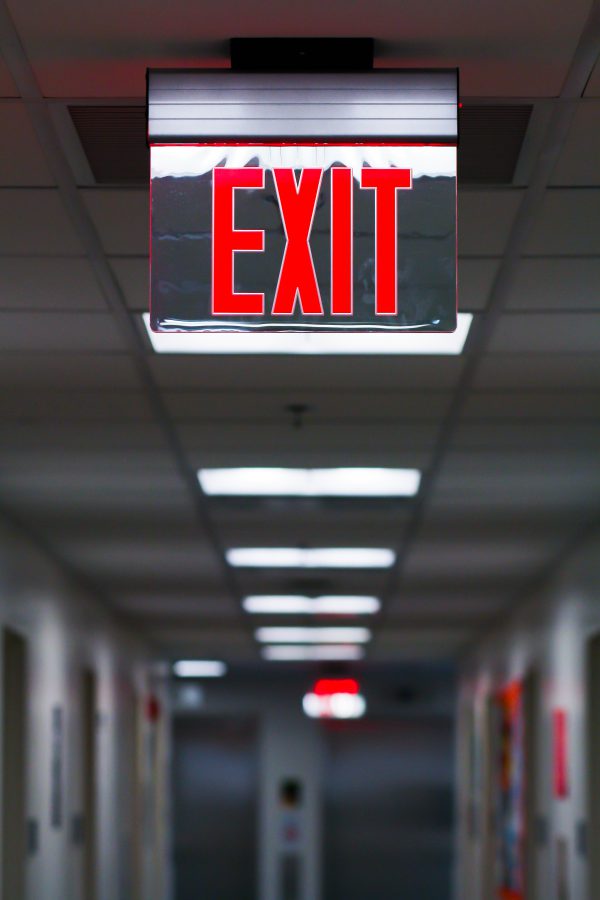
Campus fire safety is not likely a hot button issue with college students or parents when they first move on campus. But fires occur on college campuses more than parents and students realize. According to The Center for Campus Fire Safety, between 2000-2018, more than 92 fatal fires killed 132 people on college campuses, Greek housing, or off-campus housing within three miles of college housing. The NFPA reports that U.S. fire departments responded to an average of 3,870 fires in dormitories and Greek housing from 2009 to 2013. Cooking equipment accounts for 86 percent of the fires.
Most dormitories have specific rules and regulations in place to reduce the possibility of fire, but sometimes drugs and alcohol consumption can inhibit a student’s ability to recognize danger zones. It’s worth mentioning to your child that special care must be taken with the following items, even when they allowed by residence:
- Space heaters
- Candles
- Stovetops
- Cooking utensils
- Smoking
- Overloaded power strips
When you move your child in, you can help keep them safe by keeping fire safety in mind:
- Check for smoke alarms and fire sprinklers. These should be located in hallways, lobbies, bathrooms, bedrooms, etc.
- Look for a posted escape route. If there are no plans posted, make one.
- Check with school officials when and how often fire drills are planned. There should be fire drills on-campus, in Greek housing and off-campus housing.
- Keep all exits clear for a safe escape path.
- Do not use flame candles, opt for battery operated candles.
- Practice fire safety in the kitchen. Do not leave food cooking unattended and do not cook when tired or in a compromised state. Unplug appliances. Do not put out grease fires with water.
- Do not overload outlets.
- Turn off electronics and appliances, like computers, hair tools, etc. Hit the off button when leaving the room.
- Clean the lint trap from the dryer, before and after each use.
- Smoke outside! Do not dispose of cigarettes, etc. in the garbage.
Unfortunately, one of these potential fire hazards became real when a mother lost her daughter in a fire while she was attending Reed College near Portland, Oregon. Because of this tragedy, the victim’s mother partnered with the Portland Fire and Rescue to promote the “Zero Death Initiative.” The program aims to educate students, who are on their own for the first time, about fire safety.
Starting college is a big step into a new world for everyone but campus fire safety should not be lost in the fray. Take the precautionary measures now so your child can stay focused on the year ahead. Total Fire and Safety keeps residential buildings equipped and compliant with proper fire code regulations. To find out more about what we do, give us a call at 630-960-5060.
Category: Fire exits, Fire Extinguishers, Fire News, Fire Safety, Total Fire and Safety Tags: emergency exit, emergency exit lights, escape route, fire and safety equipment, fire drill, Fire Extinguisher, fire safety, Firesprinkler, safety, smoke alarms | Comments Off on Parent’s Guide to Campus Fire Safety
-
August 23, 2018 by Total Fire and Safety
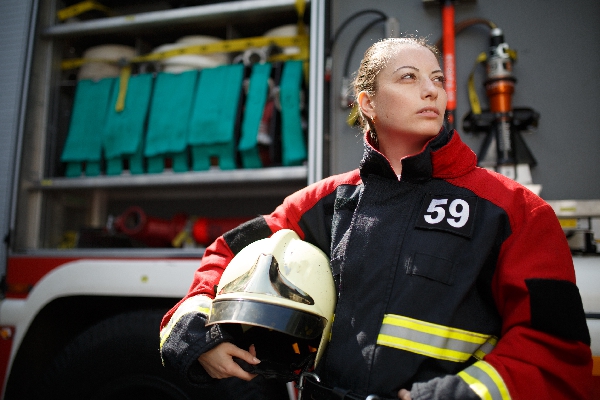
Are there more women firefighters in our future? YES! Groups of Suburban Chicago young women are proving it. This past summer a local Fire Protection District hosted a Girls Firefighter Summer Camp which was enthusiastically attended by many girls who are considering firefighting as a career. The girls learned all aspects of firefighting through hands-on training, like climbing ladders, treating patients, and putting out fires, etc. The goal of the camp was to show girls they can do the job, but they need look no further than the past and the present for their role models and inspiration.
Women Firefighters in History
Women have been firefighters for over 200 years which is an amazing fact in an industry so dominated by males.
- Molly Williams was the first woman firefighter. She was a slave in New York City until she became a member of Oceanus Engine Company #11 in 1815. Although she was as tough as the men, she always wore a calico dress and checkered apron to the fires.
- In 1820, Marina Betts joined the Pittsburgh fire department, a career that lasted 10 years.
- During WWII, two military fire departments in Illinois were staffed entirely by women volunteers.
- Lauren Howard was the first career female firefighter in Chicago. She joined the force in 1980 and was the only woman until 1986.
Women Firefighters Today
According to NFPA (National Fire Protection Association), 252,000 women work in the firefighting industry, but nationwide, only 4% of firefighters are women, a staggering number when compared to the 90% of women nurses and 97.5% of women teachers. In fact, females in farming and construction have a higher percent than female firefighters.
The International Fire Chief’s Association started a council for women fire chiefs in 2017 to network, share ideas and identify strategies to improve their organization. The council of 16 represented approximately 50 female fire chiefs across the country.
Even for the strongest female, the road to firefighting is not easy. Cities like Joliet, Illinois are hiring their first female recruit this year in their long, century old history. Another department in East Point, Georgia recently made headlines by hiring the first ever African-American female fire chief in the United States.
Male and Female Qualities
Let’s face it. When someone’s house is burning, most people don’t care if it’s a man or woman who shows up to help…they just want a good firefighter. And the attributes of a good firefighter are numerous and have nothing to do with gender.
- Honest and dependable
- Learns quickly; can remember and use their training when the pressure is on
- Physically fit; is committed to a healthy lifestyle and to maintaining fitness
- Functions well as part of a team
- Cares about and respects co-workers and members of the community
- Communicates and listens well
- Is dedicated to her/his work
- Has, and uses, common sense
- Is emotionally stable and deals with stress appropriately
- Has a sense of humor
- Is open-minded and flexible, willing to try new things and listen to new ideas
At Total Fire & Safety, we believe our work in inspection, installation and maintenance of fire safety equipment helps keep firefighters safe by helping minimize fire damage and providing what’s needed to fight fires until the force arrives. We salute all fire fighters and especially the brave women of the force who work to keep us safe!
Category: Fire News, Total Fire and Safety Tags: fire safety, fire safety in the news, Total Fire & Safety, Women Firefighters | Comments Off on Are There More Women Firefighters in Our Future?
-
June 21, 2018 by Total Fire and Safety
Everyone has seen the fire hydrants on the side of the road and everyone knows how important they are for firefighters to do their job. Can you 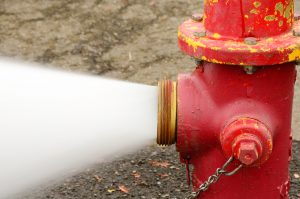 imagine what would happen if in the heat of an emergency, a fireman hooked up the hose to the hydrant and it failed? That’s why municipalities perform regular inspection and maintenance on “public” fire hydrants. imagine what would happen if in the heat of an emergency, a fireman hooked up the hose to the hydrant and it failed? That’s why municipalities perform regular inspection and maintenance on “public” fire hydrants.
However, you may also have fire hydrants installed on your private property which are considered yours to inspect and maintain. The National Fire Protection Association (NFPA) has a standard that is adopted by many village ordinances and outlines the inspection, testing and maintenance requirements that need to be followed.
In other words, to ensure the health of the overall water supply system and the proper functioning of the hydrants located most closely to your business, it is your responsibility to maintain any fire hydrants on your private property.
Recently, the Village of Downers Grove began notifying building owners who have hydrants on their private property of any need for routine inspection, testing and maintenance. The Village is setting an aggressive schedule for ensuring all municipal water mains and hydrants receive the proper testing as outlined by the NFPA standard by September 1. Property owners can contact any commercial fire protection company they want to complete the inspection.
If you need fire hydrant service, Total Fire & Safety can help! We are a trusted, full-service provider of commercial fire protection that has been serving the Village of Downers Grove for more than 30 years.
Our fire hydrant service includes:
- Full inspection
- Any needed repair
- Reporting to DGFD and all third parties (www.theComplianceEngine.com) as directed by the Fire Department
If you are not sure of whether your fire hydrants are in compliance, you can check with the Village of Downers Grove Water Department at 630-434-5460 or the Downers Grove Fire Department at 630-434-5983.
If you would like to schedule your hydrant service today, contact us at 630-960-5060.
Testing ensures the proper flow and flushes debris from the hydrant.
Category: Business Safety, Fire News, Total Fire and Safety Tags: downers grove, downers grove fire, downers grove il, fire hydrant inspection, fire hydrant safety, fire hydrants, fire hydrants il | Comments Off on Downers Grove Businesses: Your Fire Hydrants May Need Inspection
-
May 30, 2018 by Total Fire and Safety
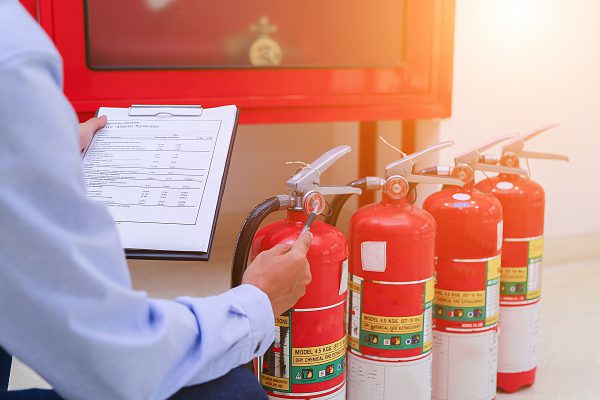
Most companies understand the mandate to have regular fire extinguisher inspections but many wonder why on earth a company could actually fail these inspections. After all, a fire extinguisher is rarely used so how can it need service?
Chances are you see a fire extinguisher every day, but how closely do you look at it? Even one dent in the tank can change the outcome. According to the NFPA, nearly 30 percent of fire extinguishers are not in proper working order. Total Fire and Safety’s twelve-point check can ensure your company’s compliance. However, there are five main reasons why companies fail a fire extinguisher inspection.
1. Unseen Damage– Corrosion or damage can occur over time in hard to see areas of the extinguisher, for example, rust within the tank. That is when a professional steps in and inspects the extinguisher inside and out. TFS will visually examine the extinguisher making sure it is free of dents, rust, or other hazards.
2. Potential Hose Blockage– Debris can clog the hose or deterioration of the O-rings can occur over time, rendering a fire extinguisher useless in an emergency. TFS will remove the hose completely to check for irregularities.
3. Possible Leaks– Whether large or small, a leak will cause the fire extinguisher to be inoperable. Anyone can check the pressure gauge to determine if there is a leak. However, if there is no pressure gauge, you will need a professional. TFS will confirm the compression in the tank.
4. Wear/Fading of Labels– Labels are vital when fighting a fire because they contain instructions on how to use the extinguisher. They also provide important information about the device’s maintenance history, which is needed by inspection professionals. Once your fire extinguisher inspection is complete, the labels will be updated, and an additional certification tag will be attached.
5. Recharging Needed– Once a fire extinguisher is used, even partially, it will need to be recharged immediately. If you fail to recharge the extinguisher, it will fail you in a fire.
Although these are common reasons companies fail fire extinguisher inspections, there are other possible hazards not listed. It is important to stay up-to-date with your fire extinguisher inspections. The NFPA requires inspection every month and maintenance every year by a professional. In addition, a stored pressure extinguisher requires internal maintenance every six years and a hydrostatic test every 12 years.
It takes a minute for a fire to spread and cause irreparable damage to your company—the same amount of time it takes to schedule a fire extinguisher inspection!
Total Fire and Safety can inspect your fire extinguishers to ensure they are unfailingly ready to fight fire at a moment’s notice. We also provide onsite training for your employees, including hands-on practice in the use of a fire extinguisher. Give us a call today at 630.960.5060.
Category: Business Safety, Fire code violation, Fire Equipment Inspections, Fire Extinguishers, Fire Extinguishers, Fire Safety, NFPA Compliance, Total Fire and Safety Tags: equipment, Extinguisher, fire and safety equipment, fire and safety needs, Fire Extinguisher, fire extinguisher inspections, fire safety, safety, Total Fire & Safety, Total Fire and Safety | Comments Off on Why Companies Fail Fire Extinguisher Inspections
-
March 15, 2018 by Total Fire and Safety
 Nobody thinks much about emergency exit lights. But if the power suddenly goes out, smoke fills the room and you can’t see a foot in front of you, relying on the emergency lights may be your only means of escape. Nobody thinks much about emergency exit lights. But if the power suddenly goes out, smoke fills the room and you can’t see a foot in front of you, relying on the emergency lights may be your only means of escape.
Emergency exit lights are essential to safety in any dangerous situation. They can alarm someone in a fire, be the only source of light in the dark, and the key to safely exiting the building. Emergency exit lights are often overlooked and taken for granted, but take note of how many you come across every day. Do you realize how many requirements and regulations go into the installation and maintenance of one exit sign?
There are numerous agencies that govern emergency exit lighting and signs: OSHA (Occupational Safety and Health Administration), NFPA (National Fire Protection Administration, JCAHO (Joint Commission on Accreditation of Healthcare Organizations and the International Building Code and International Fire Code. Above all these agencies, the local authority is responsible for monitoring and enforcing building/fire codes.
According to OSHA, an exit route is defined as a continuous and unobstructed path of exit travel from any point within a workplace to a place of safety. There are three parts to an exit route:
- Exit access-part of the exit route that leads to an exit.
- Exit-part of the exit route that is separated from other areas and provides a safe means of travel to exit discharge.
- Exit discharge-part of the exit route that leads to directly outside or refuge area.
OSHA’s requirements for the lighting of these afore mentioned exit routes is covered under 1910.37(b). It states that each exit route must be sufficiently lighted so an employee with normal vision can see along the exit route and each exit must be clearly visible and marked by a sign reading “EXIT.” Additional information for OSHA requirements can be found at www.osha.gov.
The NFPA guidance for emergency exit lighting and signs can be found in the NFPA 101, Life Safety Code. The NFPA’s Life Safety Code provides information for placement, illumination, and visibility for exit signs.
- Placement of exit sign. Any exit signs must be located so that no point in an exit access area is more than the sign’s viewing distance, or 100 feet from the nearest sign.
- Visibility of exit signs-Every sign must be located and of such size, distinctive color and design that is visible and contrasts from the background of its placement. NFPA also states no decorations, furnishings, or equipment that impairs visibility of a sign shall be permitted. Nothing should be placed near an exit sign that distracts attention and inhibits visibility of an exit sign.
- Illumination of Exit Signs-The NFPA states all exit signs must be illuminated by a reliable light source and legible in normal and emergency exit lighting modes. There are two categories of illumination: external illumination, which comes from outside the exit sign and internal illumination, which comes from a source inside an exit sign.
According to the NFPA, emergency illumination must be provided for a minimum of 1.5 hours in the event of power outage. The emergency lighting must be illuminated not less than an average of one lumen per square foot. The maximum illumination at any point can be 40 times the minimum illumination. All emergency exit lighting must be able to provide lighting automatically when normal light is interrupted.
Many emergency exit lights are now using LED lights. The NFPA states that LED lights are longer lasting, provide better light and are most durable. In emergency situations, LED lights emit sufficient lighting and are most effective when placed properly. They are also most energy efficient, saving the building money.
According to the NFPA requirements for testing, there are three categories of emergency lights: traditional, self-testing, and computer base self-testing. A monthly activation test which involves having the lights illuminate for no less than 30 seconds and an annual test which keeps the lights illuminated for 1.5 hours, simulating a long-term emergency. Records of these test must be maintained for inspection.
Many regulations, codes, and considerations go into the signs and lights you see every day so it is important to have regular maintenance and testing of these lights. Total Fire and Safety has a knowledge team for inspecting emergency exit lighting. With regular maintenance and testing from Total Fire and Safety, you can be assured your emergency exit lighting is up to code and the safety of your employees/tenants is assured. Give us a call today 630-960-5060.
Category: Business Safety, Fire code violation, Fire Equipment Inspections, Fire exits, Fire News, Fire Safety, Health and Safety, LED Lighting, NFPA Compliance, Total Experience, Total Fire and Safety Tags: commercial fire protection, commercial fire safety, emergency exit lights, emergency lighting, fire and safety equipment, fire and safety needs, fire and safety solutions, fire safety in the news, fire safety solution, fire safety training, lifesafety, safety | Comments Off on Are You In the Dark About Emergency Exit Lights?
-
December 19, 2017 by Total Fire and Safety
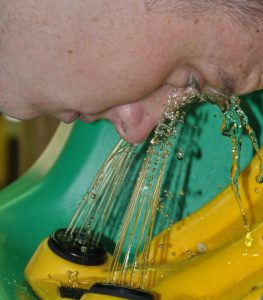 If you have hazardous chemicals onsite, you likely need an emergency eyewash station. One of the many vital services we provide at Total Fire and Safety is performing inspections on emergency showers and eye wash stations. Like any fire or safety equipment, routine inspections are a must to ensure your equipment will perform perfectly at a moment’s notice. In an emergency situation, nobody has the time troubleshoot an underperforming piece of equipment, let alone attempt to repair it. We’ve outlined the steps we take to ensure your eye wash station or emergency shower is ready in an emergency:
1. Ensure everything about the station’s location is correct. We first make sure the station is in an area it is needed. A working emergency eye wash station is of no use if it is not accessible to those who may need it. While showers tend to be fixed structures, eye wash stations can be either fixed or mobile. We also make sure the station is unobstructed and away from any source of debris or hazardous spray, which could compromise its usefulness.
2. Next, we inspect the exterior. We visually check every part of the station for any signs of damage, such as leaks, cracks, or other signs. Then, we check that all the hardware is intact and correctly in place, such as the caps, valves, and pull rods for showers. We then verify everything is at the correct height and that all signage is in its proper place before moving on to the next step.
3. After the visual inspection, we test the operation. For every eye wash station, we check the flow of water by gauging its height, volume, and response time from the moment of activation. For showers, we verify the water flows properly and onto the correct area.
4. For portable units, we empty and replace the water. This is to ensure the water in the reservoir is not only full, but clean and fresh. This step is also taken so that we can rinse out the inside as well as check for foreign debris or contaminants which could compromise the integrity of the eye wash station.
5. Finally, we clean everything and document the inspection. This entails wiping everything down with a rag and cleaning solution. Once this is done, we apply the inspection tag to the station to communicate to others when the inspection took place and what was performed. We also keep our own records of the inspection by filling out detailed information in an eyewash report.
In any facility that may contain hazardous substances, you may find an emergency shower or eye wash station idly waiting until needed. These units are not given much thought, but anyone who has ever used one in an emergency situation will vouch for its importance to stay in proper working order. If you have any questions or concerns about your emergency eye wash station or shower, or about the readiness of any of your fire safety equipment, please contact us.
Category: First Aid, Health and Safety, NFPA Compliance, Total Fire and Safety, Uncategorized Tags: fire and safety equipment, first aid, first aid supplies, Health and Safety, Total Fire & Safety | Comments Off on Are Your Emergency Eye Wash Stations Ready for Action?
-
November 29, 2017 by Total Fire and Safety
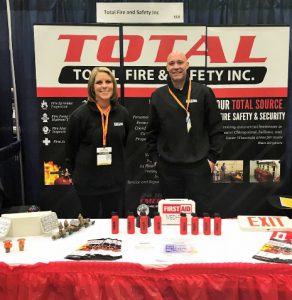 Robin Jones, business development (left) and Jason LeGrand (outside sales) at the latest Co-op and Condo Expo at Navy Pier in Chicago. Did you stop by and see us at the latest Co-op and Condo Expo at Navy Pier in Chicago?
Our team was on hand to talk to condo owners, homeowner association board members, property managers and apartment building owners about their fire safety. We participate every year, not only to meet new prospective clients, but to see our many satisfied ones that come for the educational seminars and exhibit floors.
Visitors to our booth walk away with one of our fire extinguisher-shaped stress balls (if you don’t have one, ask your Total Fire & Safety technician!) and a better understanding of their fire safety responsibilities as property owners or managers. What were the most frequently asked questions?
- How do I know if I am in compliance? (We can help perform inspections to make sure buildings are up-to-date with NFPA requirements, which vary depending on your structure and occupancy.)
- What is this wireless fire alarm technology and will it save me money? (Besides making sure your fire alarms are inspected, in compliance and operational, we can update your old equipment to reduce maintenance costs and improve performance.)
- What do my tenants need to know about fire safety? (We offer solutions and fire safety training on a customized basis.)
- Do you offer first aid kits? (We offer a variety of commercial first aid kits based on your environment’s needs. A first aid kit can make a big difference in the comfort and safety of your tenants or employees!)
- Why Total Fire & Safety? (We are one of the most experienced commercial fire protection companies on the market and make use of some of the most technologically advanced reporting features available.)
We hope to see you at the show next year! Until then, if we can be of assistance with your fire safety needs, don’t hesitate to contact us at 630.960.5060.
Category: Business Safety, Client Events, Fire Safety, NFPA Compliance, Total Fire and Safety, Uncategorized Tags: client events, commercial fire protection, commercial fire safety, Events, fire and safety needs, Total Fire & Safety, wireless fire alarms | Comments Off on TFS at the Co-op and Condo Expo
-
October 31, 2017 by Total Fire and Safety
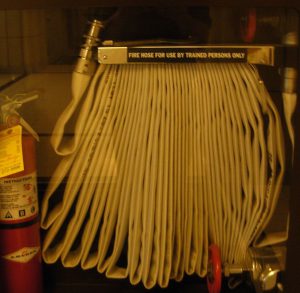 All fire safety equipment is subject to rigorous standards for safety and reliability, and fire hoses—the subject of NFPA 1962—are no exception. Despite looking like a relatively simple device, a fire hose is one of the most important lines of defense in firefighting. NFPA 1962 is an important revised standard for fire hoses; an outline which ensures that all hoses and their components will perform safely and as expected. At Total Fire and Safety, we take pride in ensuring that every fire hose meets all safety specifications. All fire safety equipment is subject to rigorous standards for safety and reliability, and fire hoses—the subject of NFPA 1962—are no exception. Despite looking like a relatively simple device, a fire hose is one of the most important lines of defense in firefighting. NFPA 1962 is an important revised standard for fire hoses; an outline which ensures that all hoses and their components will perform safely and as expected. At Total Fire and Safety, we take pride in ensuring that every fire hose meets all safety specifications.
NFPA 1962 Fire Hose Pre-Inspection
Before the inspection begins, we ensure the hose is easily accessible in all directions, and that there is a clear path to it. If the time comes to use a hose, there will be no time to clear obstructions. After this, we remove the cover from the hose and inspect the nozzle first, ensuring it opens and closes freely.
NFPA 1962 Inspection
First, we unravel the hose by the nozzle and find the tags and markings which indicate such information as the hose’s manufacture date and when it was last inspected. Once the hose is unraveled, we perform a visual inspection of the hose, inside and out, looking for any signs of wear or damage. This can be anything from cuts, to frays, to dry rotting, to contamination by a foreign substance. According to NFPA 1962, if there is any issue with the hose, we ensure it is either hydro tested or replaced. We also check the hose to ensure it is completely dry, inside and out. If we find evidence of water, we perform a hydro test to verify the hose is still up to code.
NFPA 1962 Post-Inspection
Once the inspection is complete, we carefully re-rack it to ensure it does not crack, fray, or wear prematurely over time. We also reconnect the hose to the standpipe and close the nozzle. We conclude the inspection by replacing the cover around the hose and documenting our procedure by placing an inspection tag around the standpipe.
At Total Fire and Safety, our inspectors are fully trained and up-to-date in all safety regulations—including NFPA 1962—to ensure your facility is safe and up to code. If you have any questions about your own facility’s fire preparedness, or if you are due for an inspection, don’t hesitate to contact us.
Category: Fire Hoses, Fire Safety, NFPA Compliance, Total Fire and Safety Tags: commercial fire safety, fire and safety equipment, Fire Hose Inspection, Fire Hoses, fire safety, NFPA, NFPA 1962, Total Fire & Safety | Comments Off on Are your Fire Hoses Compliant with NFPA?
|

|
|
|
|
|
|

 Facebook
Facebook
 Instagram
Instagram
 LinkedIn
LinkedIn



 imagine what would happen if in the heat of an emergency, a fireman hooked up the hose to the hydrant and it failed? That’s why municipalities perform regular inspection and maintenance on “public” fire hydrants.
imagine what would happen if in the heat of an emergency, a fireman hooked up the hose to the hydrant and it failed? That’s why municipalities perform regular inspection and maintenance on “public” fire hydrants. 
 Nobody thinks much about
Nobody thinks much about 

 All fire safety equipment is subject to rigorous standards for safety and reliability, and fire hoses—the subject of NFPA 1962—are no exception. Despite looking like a relatively simple device, a fire hose is one of the most important lines of defense in firefighting. NFPA 1962 is an important revised
All fire safety equipment is subject to rigorous standards for safety and reliability, and fire hoses—the subject of NFPA 1962—are no exception. Despite looking like a relatively simple device, a fire hose is one of the most important lines of defense in firefighting. NFPA 1962 is an important revised 